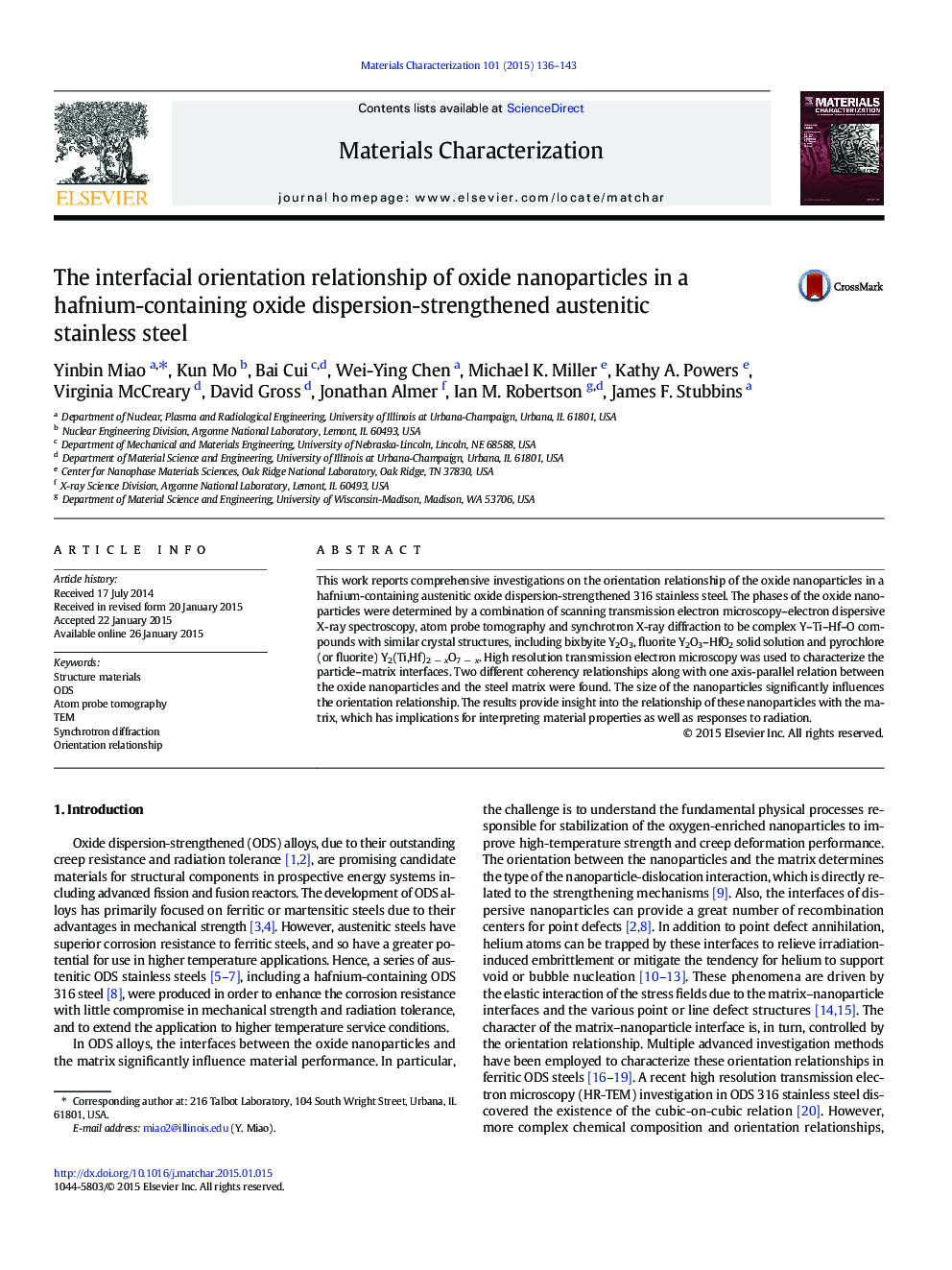| Article ID | Journal | Published Year | Pages | File Type |
|---|---|---|---|---|
| 1570833 | Materials Characterization | 2015 | 8 Pages |
•The oxide nanoparticles in a hafnium-containing austenitic ODS were characterized.•The nanoparticles are Y–Hf–Ti–O enriched phases according to APT and STEM–EDS.•Two coherency and an axis-parallel orientation relationships were found by HR-TEM.•Particle size has a prominent effect on the orientation relationship (OR).•Formation mechanism of the oxide nanoparticles was discussed based on the ORs.
This work reports comprehensive investigations on the orientation relationship of the oxide nanoparticles in a hafnium-containing austenitic oxide dispersion-strengthened 316 stainless steel. The phases of the oxide nanoparticles were determined by a combination of scanning transmission electron microscopy–electron dispersive X-ray spectroscopy, atom probe tomography and synchrotron X-ray diffraction to be complex Y–Ti–Hf–O compounds with similar crystal structures, including bixbyite Y2O3, fluorite Y2O3–HfO2 solid solution and pyrochlore (or fluorite) Y2(Ti,Hf)2 − xO7 − x. High resolution transmission electron microscopy was used to characterize the particle–matrix interfaces. Two different coherency relationships along with one axis-parallel relation between the oxide nanoparticles and the steel matrix were found. The size of the nanoparticles significantly influences the orientation relationship. The results provide insight into the relationship of these nanoparticles with the matrix, which has implications for interpreting material properties as well as responses to radiation.
